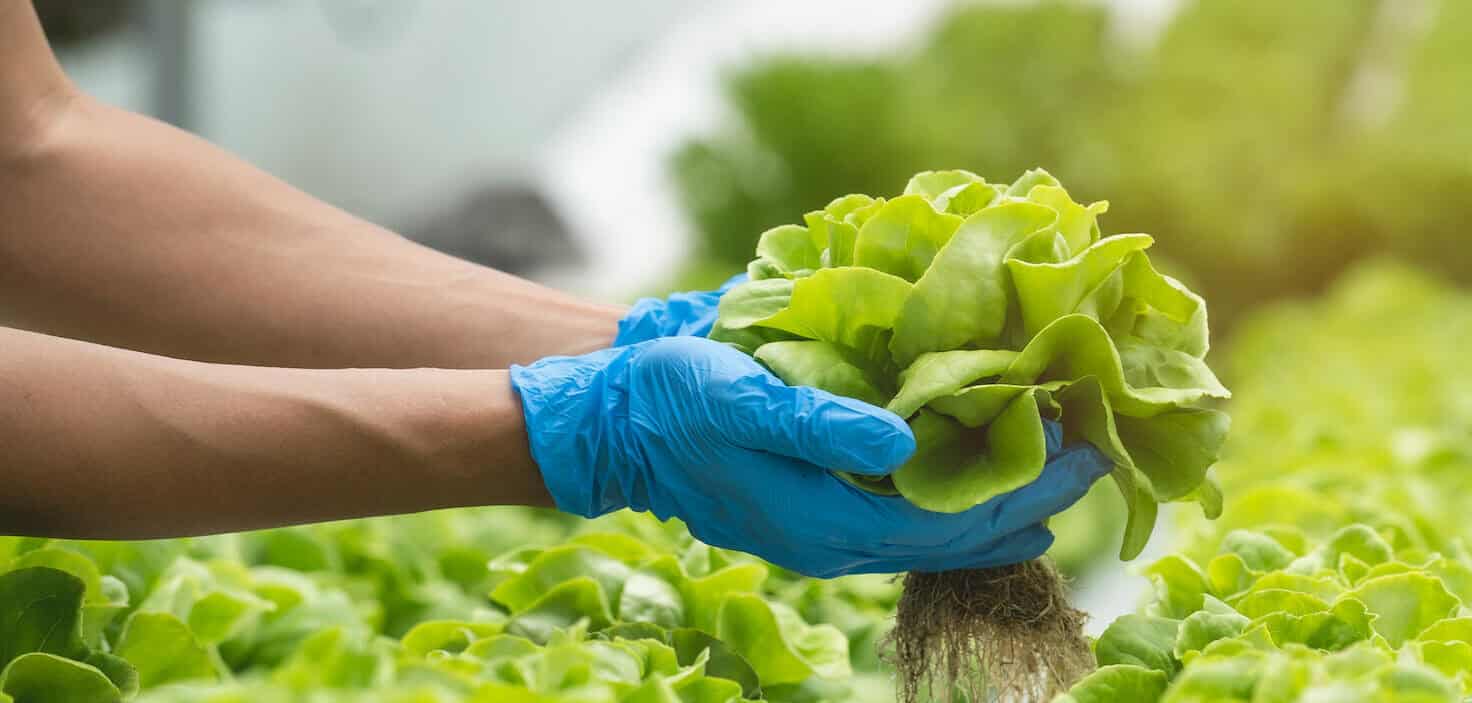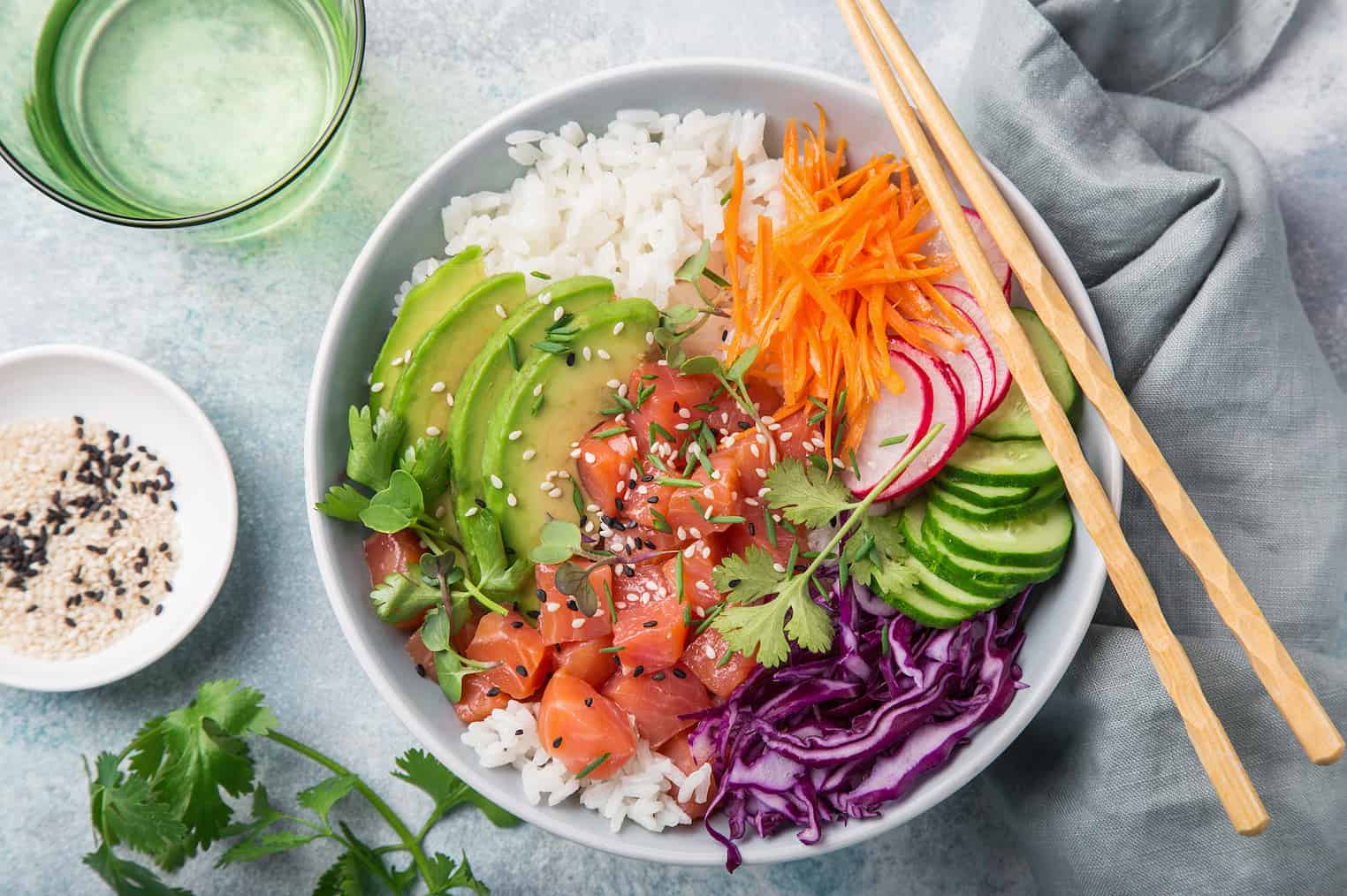Meet Alex Caspero
Alex Caspero is a Registered Dietitian, New York Times Bestselling Chef, and mom of two. She aims to cut through the nutrition noise by providing real-life, nourishing tips for body and mind. Learn more about Alex.
Today is Earth Day, a day to appreciate all that our planet gives us, and a reminder that we must take care of it. People across the world are becoming increasingly concerned about climate change: 8-in-10 see climate change as a major threat to their country.
Food production has a significant environmental impact, accounting for over a quarter of global greenhouse gas emissions. Half of the world’s habitable land, land that is ice and desert-free, is used for agriculture.
All food production affects the earth in some way, though some foods have a bigger impact than others. Overall, animal-based foods tend to have a higher footprint than plant-based. Beef is the largest contributor to greenhouse gas emissions, with 60 kilograms of CO2-equivalents per kilogram. Lamb and cheese both emit more than 20 g of CO2-equivalents. Poultry and pork have lower footprints but are still higher than most plant-based foods, at 6 and 7 kg CO2-equivalents, respectively.
This doesn’t mean you have to become vegan or vegetarian, but understanding the environmental impact of food choices can help in deciding which foods you choose more often.
These are 10 climate-friendly foods for Earth Day.
These champions are winners in the sustainable protein category. They require less water to grow than meat and are nitrogen-fixing plants, meaning they actually improve the soil they’re grown in!
Beans and lentils are also a fantastic source of protein and fiber, making them a filling and nutritious addition to any meal. Plus, they are cheap– costing on average about $1 per pound.

Nuts can be a great climate-friendly food choice. Nut trees are also currently replacing croplands, which allows the land to not only be used for more sustainable crops but the trees also help to store carbon.
Almonds are an exception because they require a lot of water in some regions. But other nuts, like cashews and pistachios, can be a sustainable protein source for a climate-friendly diet.

Citrus fruits, including oranges, lemons, and limes, produce only 0.3 greenhouse gas emissions per kilogram, a fraction of that produced by many other foods.
Orange trees can live and produce fruit for decades, requiring less frequent planting compared to some annual crops. This reduces the overall environmental impact associated with land management and planting.
Plus, orange peels and pulp that are leftover from juice production can be used to create products like pectin (a thickening agent in jams) or essential oils. This reduces waste and utilizes more of the fruit.

Zbar is a delicious, soft-baked snack bar made with energizing, organic whole-grain oats to fuel active kids during play. It is sized for little hands and has the delicious taste and texture kids love. Plus, Zbar is a good source of fiber, non-GMO, and has no artificial flavors, colors, or preservatives.
When it comes to their impact on the earth, Zbar is Climate Neutral Certified and USDA Organic. To become Climate Neutral Certified, a company must work to reduce the greenhouse gas emissions generated from making and delivering its product and invest in projects that help reduce emissions and contribute toward global net-zero effects.
The USDA Organic seal on Zbar is also important because organic farming conserves and restores biodiversity and stores carbon in the soil (where it increases soil fertility) instead of releasing it into the atmosphere.

Whole grains like brown rice, quinoa, and whole-wheat pasta are superstars when it comes to climate-friendly carbohydrates.
Nutritionally, they are minimally processed and can be a surprising source of protein. A single cup of pasta contains 8 g of protein, more than an egg!

Eggs have a much lower environmental impact than other animal-based foods. They require less land and water and produce fewer greenhouse gas emissions than chicken, pork, or beef.

These tasty fungi are like little recyclers! Mushrooms act as decomposers, breaking down organic matter and returning nutrients back to the soil. This promotes healthy soil, which is crucial for sustainable agriculture.
Mushrooms require very little water to grow; they thrive in moist, controlled environments and don’t need the constant watering needed for other crops.

While much of the world’s fruits and vegetables are grown in large, open fields, there are other ways to grow produce without large amounts of land — and even without soil! Hydroponic plants are exposed to light, air, and nutrients (like nitrogen, calcium, and phosphorus) that allow plants to be grown vertically instead of horizontally, producing a greater yield.
Hydroponic plants use as much as ten times less water than traditional field crop watering methods because water in a hydroponic system is captured and reused rather than run off.

These soy-based products are fantastic meat alternatives packed with protein and essential nutrients. Soybeans themselves are nitrogen-fixing plants, improving the soil they’re grown in.
Tofu and tempeh production requires less water and land compared to meat, making them a climate-friendly protein option.

Seafood, in general, has a lower impact on space and freshwater than land-based animal proteins. Wild-caught fish is a more climate-friendly food choice compared to farmed fish, pork, eggs, cheese, lamb, and beef.
Wild-caught fish, in general, don’t require any land or freshwater. The largest emissions from wild-caught fish come from the fuel used by fishing vessels. The Monterey Bay Aquarium has a Seafood Watch program that lists various food options and their sustainability impact.

There are five places in this world where the healthiest and longest-living people gather. These places are Okinawa (Japan), Sardinia (Italy), Nicoya (Costa Rica), Ikaria (Greece), and Loma Linda (California). These places that assembled the highest concentrations of centenarians are known as The Blue Zones.
Ever wonder how the elders in the five Blue Zone countries maintain their youthful lives? While exercise, purpose, and community are also central tenets of the Blue Zones, food and diet play a large role.
These are the 7 staple foods of the Blue Zones.

These recipes are ideal for hectic weeknights. Whether you prefer pasta dishes or stir-fries, these flavorful and effortless-to-prepare meals will allow you to unwind and relish your evenings without sacrificing taste.
35 Speedy and Simple Dinner Recipes

Snacking can seem like a slippery slope when trying to eat better. While nutritious, balanced snacks can curb appetite and help you eat less, those choices are often harder to find. The snack aisle is typically filled with highly processed snacks– chips, cookies, candy, and cheese puffs, not exactly items most of us should be eating more of.
Having dietitian-approved snacks on hand can make sticking to your health goals much easier when hunger hits. With minimal prep and portion control, these snacks offer an easy way to curb cravings and give your body the fuel it needs.
These are the best store-bought, dietitian-approved snacks.

From nutrient-dense vegetables to protein-packed superfoods, these dietary recommendations are not only delicious but also scientifically proven to promote good health. These are the 19 superfoods that nutrition experts want you to eat more of.
These are the 19 Healthiest Foods You Should Be Eating More Of, Say Dietitians
The Ultimate Plant-Based Protein Cookbook + Course
(Includes 40+ recipes!)

FREE 7-DAY COURSE + COOKBOOK

(no comments) leave a comment